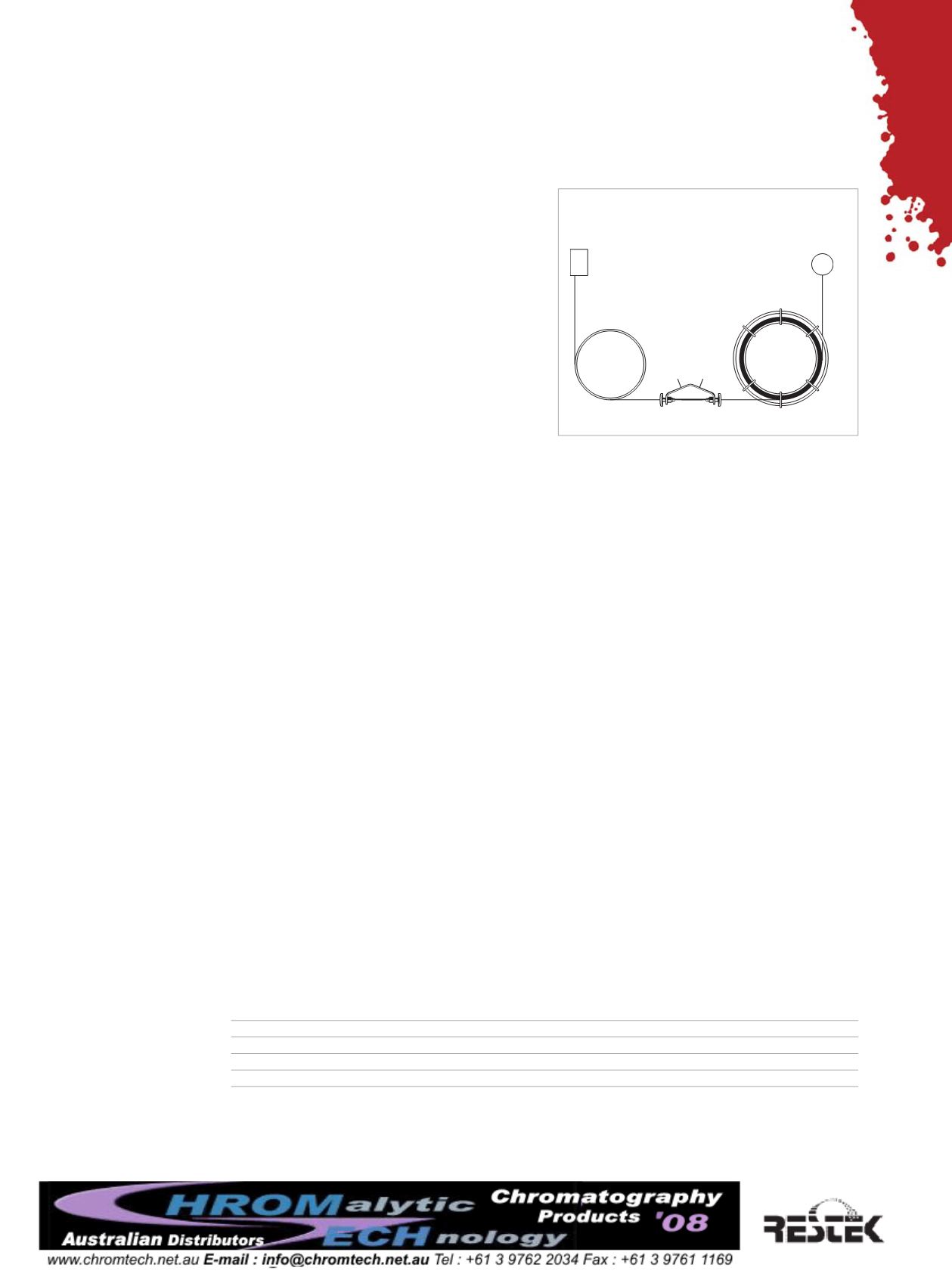
CLINICAL/FORENSICS
29
Capillary GC Columns: Guard Columns
FusedSilica
Intermediate-PolarityDeactivatedGuardColumns/TransferLines
• Useful for awide range of applications.
• Usewithmost common solvents.
• Maximum temperature: 325°C
Nominal ID
Nominal OD
1-Meter
5-Meter
5-Meter/6-pk.
0.18mm
0.37± 0.04mm 10102
$15
10046
$50
0.25mm
0.37± 0.04mm
10043
$40
10043-600
$200
0.32mm
0.45± 0.04mm
10044
$45
10044-600
$225
0.53mm
0.69± 0.05mm
10045
$60
10045-600
$300
What isaguardcolumn?
A capillaryGCguard column is a short lengthof deactivated,uncoated fused silicaorMXT® stainless
steel tubing that is connected to the inlet endof the analytical column (Figure 1). The guard column
trapsnonvolatile residuesandprevents them fromcollectingat the inletof theanalytical column,with
important benefits:
• Increased column lifetime (more injections).
• Prevents peak splittingduring splitless analysis.
• Improved analyte focusing.
Contaminants that accumulatewithin the analyt-
ical columncanadsorbactivecompounds, reduce
resolution, and cause poor peak symmetry.
Packed inlet liners remove only a portion of the
non-volatile contaminants in samples.When this
contamination begins to affect sample analysis, a
section (15-30cm) of the analytical columnmust
be removed to restore performance. Each time a
section of the analytical column is removed,
retention times change and some resolution is
lost, eventually resulting in a need to replace the
column. By removing contaminated loops from the guard column instead of the analytical column,
the inertness and lengthof the analytical column remain intact, so retention times and resolutiondo
not change. The amount of time the sample spends in the guard column isminimal because there is
no stationaryphase.
What typeofguardcolumnshouldbeused?
It is important tomatch thepolarityof the sample solvent and thepolarityof the surfacedeactivation
in the guard column. IntermediatePolarity (IP) guard columns allowmost common solvents (meth-
ylene chloride, hexane, isooctane, toluene) to easilywet and create a uniform filmon the tubing sur-
face.Apolar-deactivatedguard column is necessary to allowmorepolar solvents such asmethanol or
water towet the tubing surface. Polar-deactivated guard columns are not resistant towater vaporiza-
tion, which occurs when liquid water is injected onto the tubing, and rapidly vaporizes (such as in
steam cleaning).Hydroguard™deactivation is an alternative for direct aqueous injections. However,
aHydroguard™-deactivatedguard columnwill not allowpolar solvents towet the tubing surface, and
may cause beading of the solvent if the oven temperature is 20°C below the solvent boiling point.
Siltek®deactivation creates a highly inert surface for very active compounds such as chlorinatedpes-
ticides. Base-deactivated guard columns reduce adsorption and tailing for amines and other basic
compounds.
How isaguardcolumnconnected to theanalytical column?
The most common connector is the Press-Tight® connector. In addition, Restek offers Vu-Union®,
Vu2-Union™, andGerstelGRAPHPACK® connectors for attaching guard columns.MXT
®
unions are
available for connecting stainless steelMXT® columns andguard columns. Seeour general catalog,or
website, for information about these connectors.
Injector
Guard Column
Detector
Analytical Column
Figure1
Aguard column connected to
ananalytical column
Vu2Union
™
Connector
please
note
For superior inertness, try our
Siltek
®
guard columns!
for
more
info
Having troublemaking a leak-
free connection?Try our “built
in” Integra-Guard™ columns!
See page 30 for details.
didyou
know
?
We test our guard columns/
transfer lineswith theGrob
testmix to ensure high
inertness.


